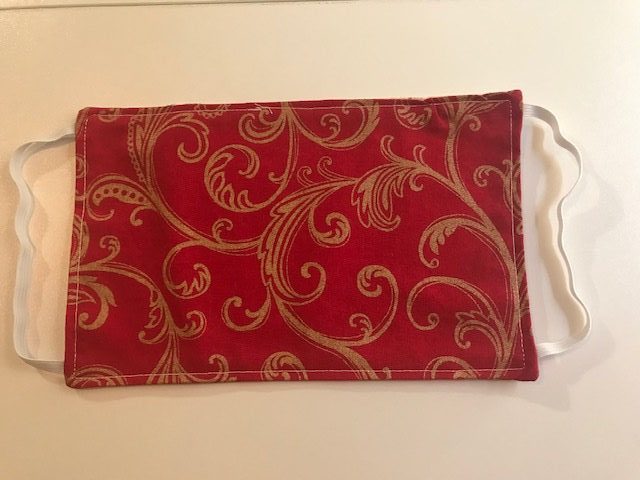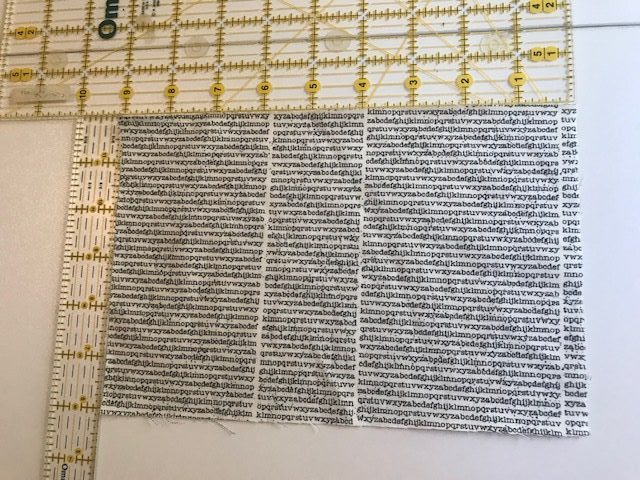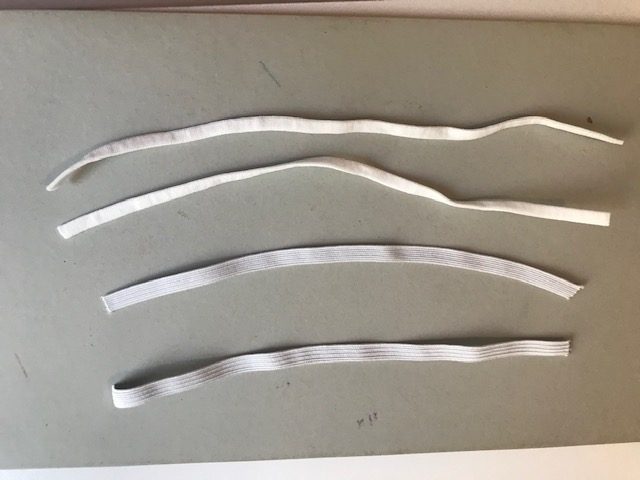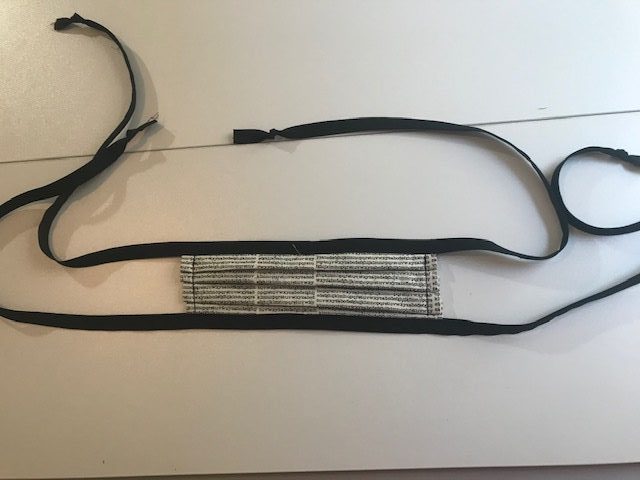I resisted making a video about making masks because there were so many already online. But a few people have asked me how to make my simple, basic masks and they found the online instructions a bit confusing and intimidating. So, here is my attempt at showing you that making masks isn’t that hard – it’s just a matter of following the steps. Eventually, you’ll find you can make several in a half hour sewing session.

Making Masks: Rectangles with pleats
I make basic rectangular masks with pleats. I have tried other patterns, but this one is the quickest and the one I like to wear most (not that I like to wear masks at all, but it’s the closest to what I had to wear when I was working as an RN). Technically you don’t need pleats, but they are for your comfort. They keep the fabric from sticking to your face because the pleats give some space.

I have made hundreds of these easy-to-make masks, if not more. I don’t sell them. Instead, I ask people to donate to my local food bank, no matter where they live. To date, they have received donations from not only my local area, but from as far away as Hawaii, Florida, and many other states and I they should be getting one from Sweden soon.
It started as a local project – people in my borough needed and wanted masks, but I didn’t want to make money on this. My husband suggested charitable donations and I chose the food depot. My rules are simple: recipients donate online what they can and what they feel is fair. I don’t want to know and they don’t have to prove it. To date, we estimate the depot has received well over $2,000. We’ll never know for sure because some people are donating without mentioning the masks. Given that the depot can buy $3 of food for every $1 they receive, to say I’m delighted is an understatement.
There are no pockets for filters in the pattern I use. You can add a nose wire – but I found I don’t like them. I wear glasses and have some fog problems, but I found that if I pull my mask up and place my glasses on top of the nose area, I’m usually ok.
If you’d like to get straight to the video, here it is. (Please note there is an error in it. When I talk about putting the fabric together, I say to put the wrong sides together. I should have said to put the **right** sides together. Sorry about that.)
The pattern
I talk about the pattern I use in this blog post. You can use any pattern, but I recommend you check that it comes from a reputable source. Many online fabric stores are also providing free mask patterns but if you’re brand new to sewing or you’re not confident, I think this pattern is the best for starting.
A few decisions
Fabric: I like to make my masks reversible, with very different designs on both sides. This makes the masks a bit more fun to wear. I only use 100% quilting cotton for my masks. The weave is tighter and experts have said that fabrics made of quilting cotton are among the best of home made ones.
Size: Most of my masks are made from 6” by 9” rectangles. If I’m making a mask for a larger person or someone with a beard, I’ll cut the rectangles a bit larger, about 7” by 9.5” or so. Remember that we lose some of that fabric in the seams, so the mask will be a bit smaller than the rectangles you cut. For children, I’ll cut the rectangles 7” by 5” or 8” by 5”, depending on their age/size. Adult masks have 3 pleats, while I only put 2 in masks for children. You could make three pleats but I don’t bother.

Elastics or ties: I’ve made hundreds of masks now and by far, the most popular are the ones with elastics. If you’re going to use elastics, you will need two pieces at 7” long per mask. If you’re using ties, it depends on how you attach them. If you attach them like the elastics, you will need 4 lengths of about 20” each. If you have bias tape and attach them along the top and bottom, you’ll need 2 lengths of about 44” or so.

The top two elastics are sold as mask elastics. They are a bit more comfortable than the bottom two, which are regular 1/4 inch elastics. 
This mask has bias tape along the bottom and top.
Don’t worry about perfection or how good the first few masks work. If you’re new to sewing or haven’t sewn for a long time, this simple pattern is a great place to start and I hope this tutorial helps you. Stay safe!
